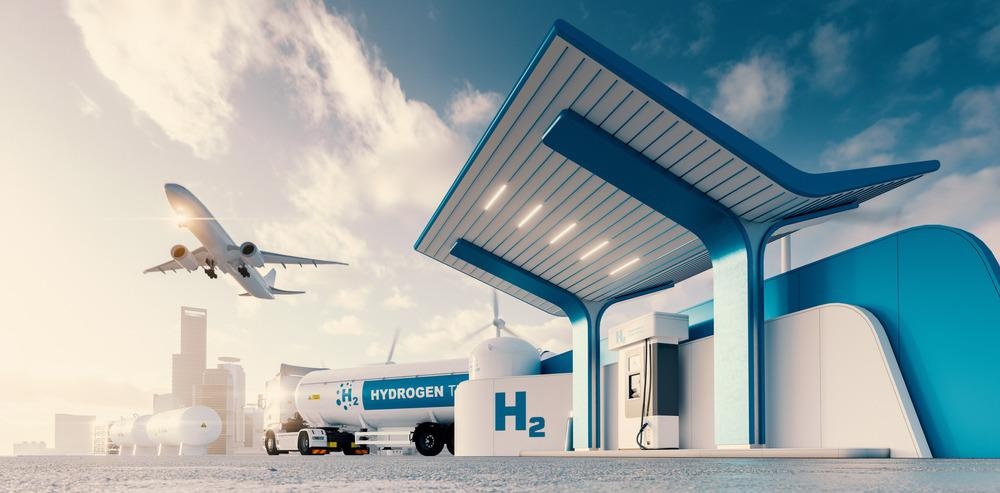The potential scope and methodologies for producing hydrogen from living diatoms and their waste in specifically built photobioreactors are discussed in a recent study published in the International Journal of Hydrogen Energy. Storing numerous energy sources from microalgae is not only easy but also reduces the expense of growing the algae.

Study: Hydrogen economy and storage by nanoporous microalgae diatom: Special emphasis on designing photobioreactors. Image Credit: petrmalinak/Shutterstock.com
Diatoms are tiny glass menageries found among many microalgae that are capable of turning accumulated fats and cellulose into hydrogen as well as absorbing 25% of atmospheric CO2. Furthermore, their silicon frustules are naturally occurring bionanomaterials with a wide range of uses in biotechnology, including hydrogen generation and fuel cells.
To create or store hydrogen in different fuel cells, diatom frustules are fused with diverse physical and biochemical elements.
Hydrogen (H2): An Important Green Energy Source
Researchers are trying to figure out how to produce energy in a more environmentally friendly manner as a result of global warming.
Hydrogen (H2) gas is regarded as the ideal fuel for a world where air pollution is on the rise. H2 and bioelectricity have created enticing mobility and power generating options with the least amount of fossil fuel emissions.
Because H2 is a carbon-free fuel, employing it as a source of energy will help to reduce environmental pollutants such as greenhouse gas emissions and ocean acidification.
This is significant because, as humanity progresses toward a future of electric cars, we will need a large amount of electrical storage so that power for EVs is not only reliant on sunlight, wind, hydroelectric, and nuclear power.
As the combustion engine age is coming to a close, energy from microalgae, particularly diatoms, can be used to power hybrid EVs. Furthermore, with the arrival of H2 battery storage, the possibility of EVs being powered by fuel cell technology has increased owing to an increased need for energy production.
Microbial fuel cells (MFC) combined with microalgal photobioreactors (PBRs) are one way to create these novel H2 fuel cells.
Why Diatoms are Important for Hydrogen Storage?
Many obstacles remain in the practical use of algae biofuel for use in automobiles and other internal combustion engines. This is mostly owing to its high manufacturing costs.
However, diatoms alone are essential for 30% of worldwide crude oil production among microalgae. They are thought to fix roughly 25% of CO2 Concentration via photosynthesis, resulting in carbon-rich final products.
Harvesting microalgae final products are a cost-effective approach since it includes sucking fats without harming the algae.
Because the cell walls of diatoms are comprised of silicon, they are hard to break. H2 is one of the most significant value-added goods that is produced and typically goes to waste owing to storage issues.
Thus, storing the H2 generated either during photocatalysis of microalgae or during microbial digestion of algal biomass is a pressing necessity.
Hydrogen Economy and Storage in Diatom
To bioenergy and other value-added chemicals from diatoms, they are in a better situation than other microalgae for the production of H2. Moreover, when combined with devices with limited photocatalytic performance, they create H2 more effectively. As a result, they are less costly than other microalgae.
However, owing to costly pre-treatment methods such as gathering, dehydration, tar formation, and low carbon conversion ratio, microalgae-based H2 has yet to be industrialized.
Researchers have discovered a solution to avoid harvesting and dehydration in microalgae treatment for final products by using tar-free catalytic reactive flash volatilization (RSV), which transforms biomass rich in lignocellulosic materials and glucose into synthesis gas in the vicinity of Ni and other metallic composite accelerators.
Conclusion and Prospects
In terms of H2 bio-economy, several criteria must be met, the most important of which is improving ways for natural H2 synthesis using photosensitive microbial fuel cells.
Anaerobic digestion and photodegradation of water by algae during photosynthesis are used in these fuel cells, which not only clean sewage and remove contaminants, but also produce H2, energy, and biodiesel.
This not only reduces the total cost of the operation but also offers up new options for assisting the seamless transition to the electric vehicle (EV) period. Although H2 generation from microalgae has several limitations, fuel cells based on microalgae such as diatom have many potential techniques to boost H2 output.
Overall, Bio-H2 is a reliable fuel since it is eco-friendly, cutting pollution, global warming, and rising temperatures.
Reference
Rai, A. et al. (2022). Hydrogen economy and storage by nanoporous microalgae diatom: Special emphasis on designing photobioreactors. International Journal of Hydrogen Energy. Available at: https://www.sciencedirect.com/science/article/abs/pii/S0360319922001173
Disclaimer: The views expressed here are those of the author expressed in their private capacity and do not necessarily represent the views of AZoM.com Limited T/A AZoNetwork the owner and operator of this website. This disclaimer forms part of the Terms and conditions of use of this website.